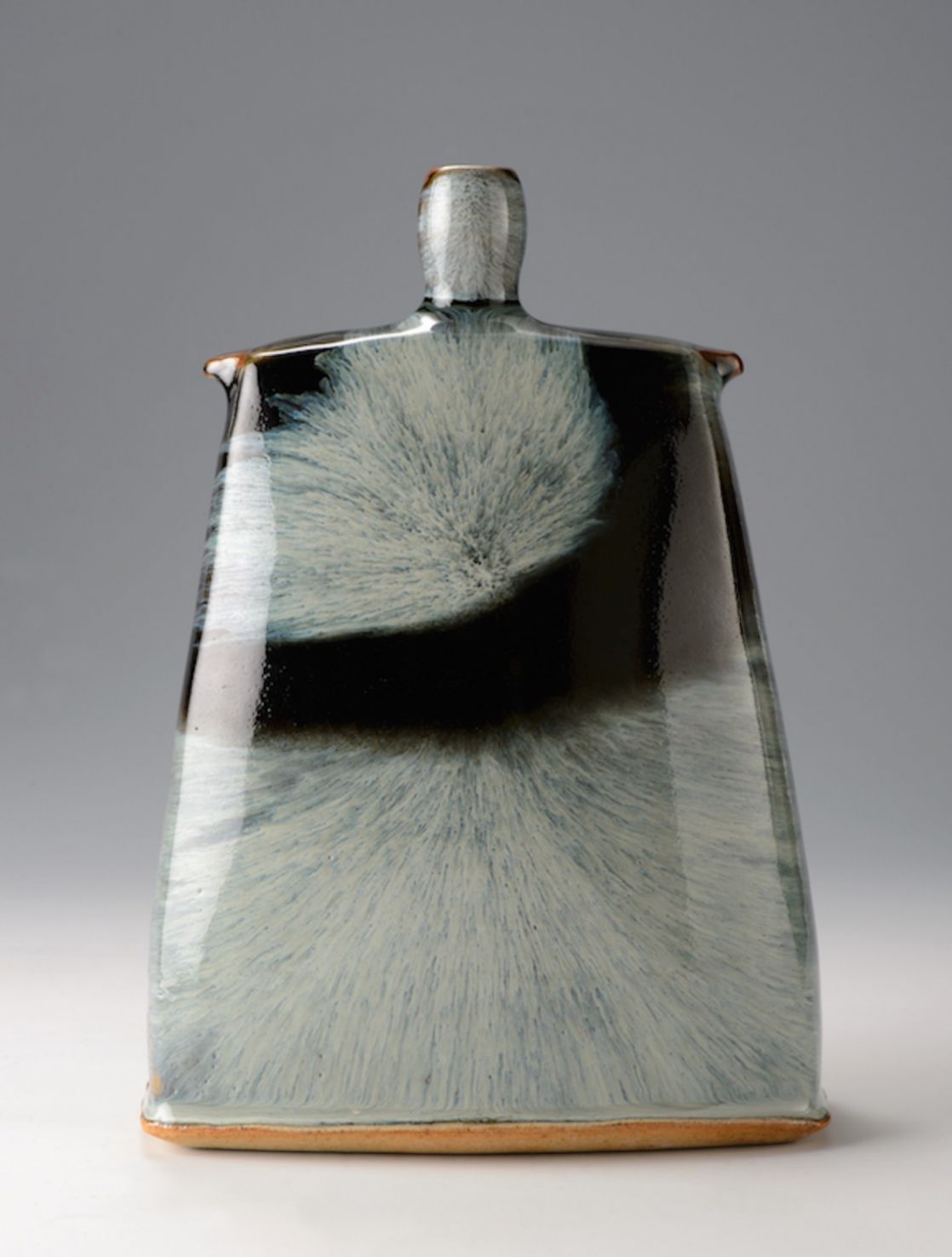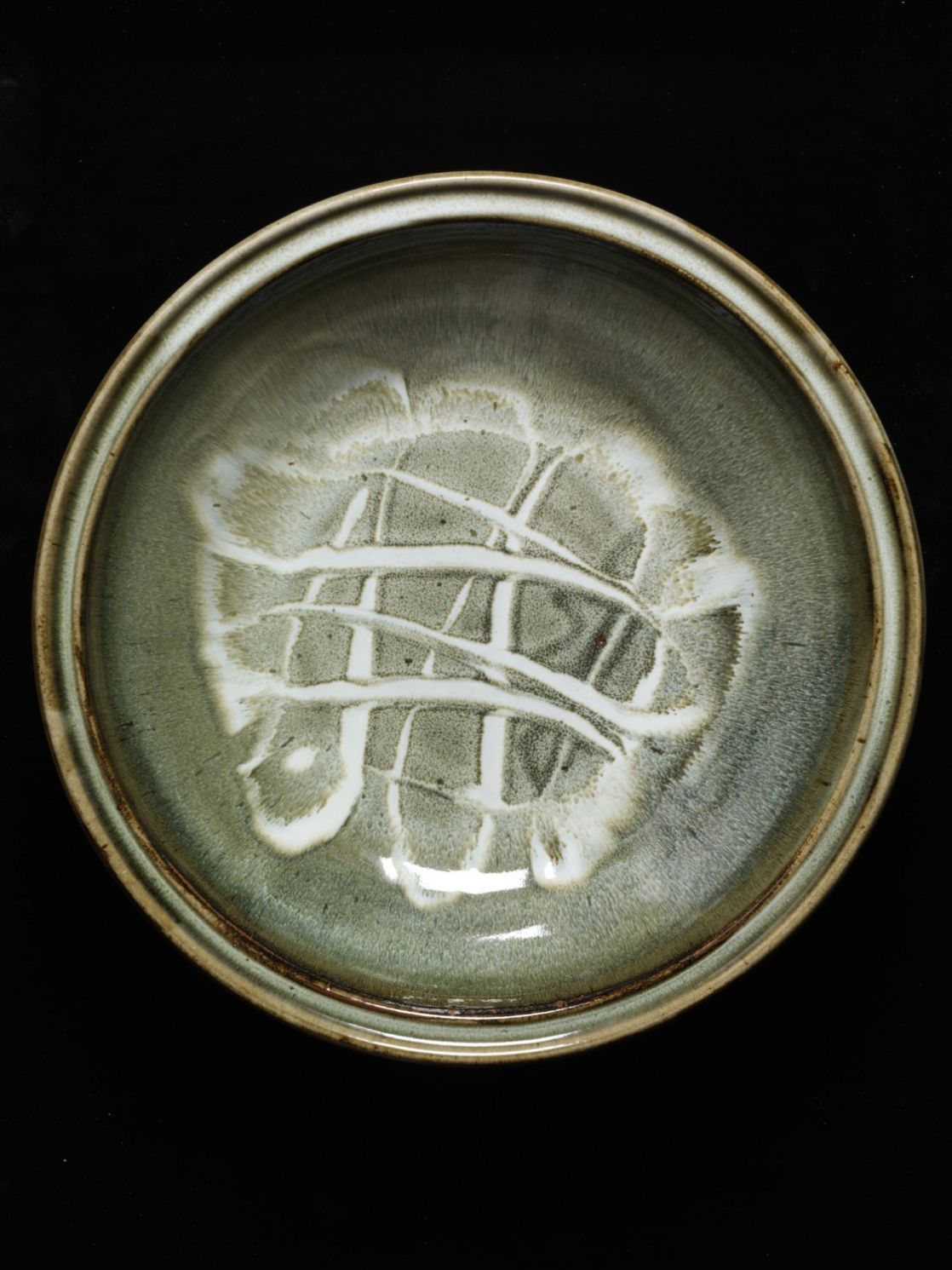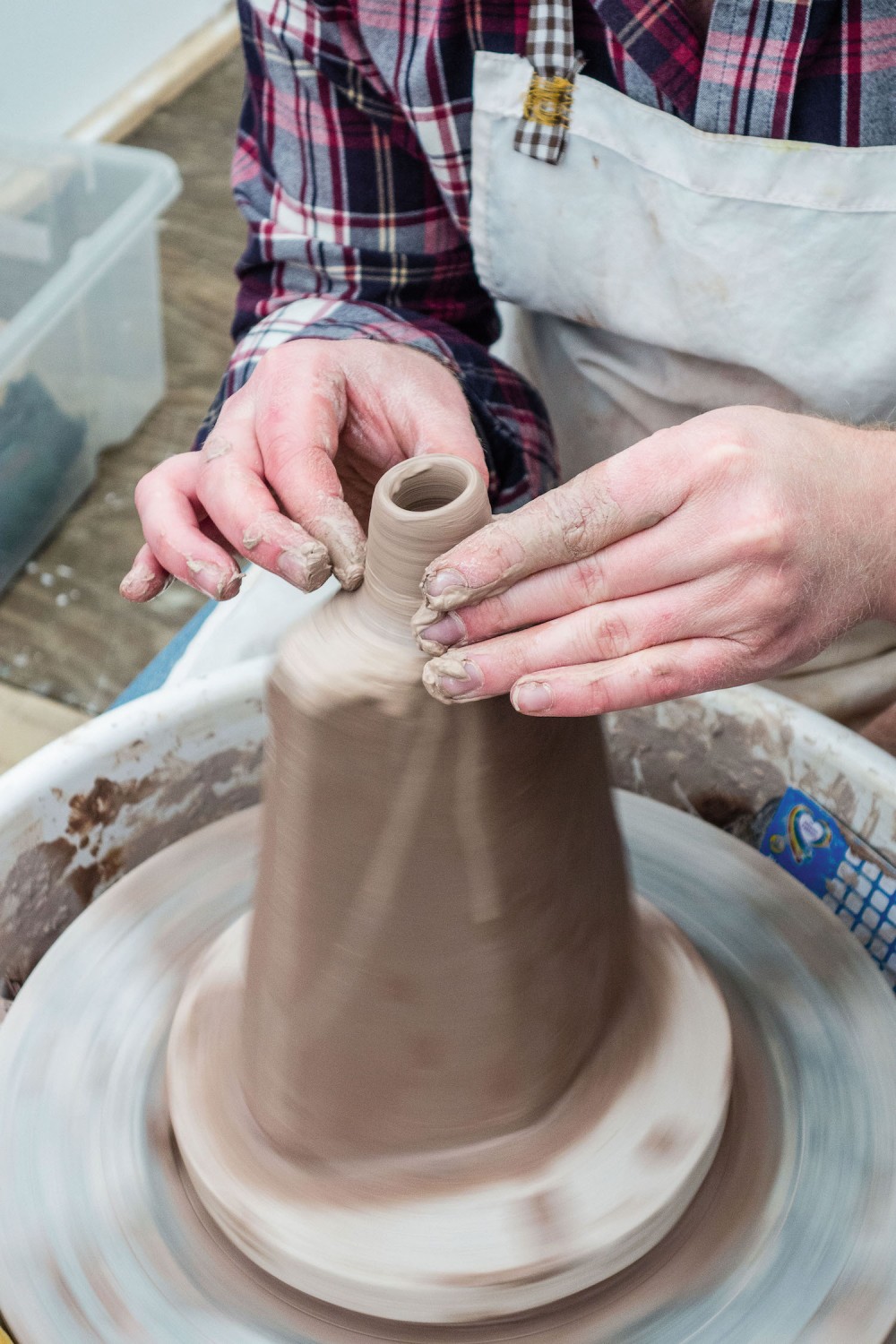Welcome to Ceramic Review
Ceramic Review is the magazine for contemporary and historical ceramics, ceramic art and pottery.
Ceramic Review Issue 334
July/August 2025
Ceramic Review is the magazine for contemporary and historical ceramics, ceramic art and pottery.
July/August 2025
British potter Edward Hughes has long influenced James Hake’s approach to ceramics. Here he discusses the impact Hughes’ skilful throwing and use of traditional Japanese glazes has had on his own making techniques.

James Hake, thrown and altered rectangular vase with nuka and tenmoku glazes. Photo: Jonathan Lynch Photography
I often wonder how it is that I became a potter. No one in my family has any connection to the arts – much less to ceramics – but I simply found something I loved doing and kept going. The slightly unnerving feeling of isolation I experience in my making has made me look outwards towards others for inspiration. I’m sure this isn’t a unique experience, no matter what your background.
When I tried throwing for the first time at university, I became obsessed by the technique. My tutor, probably trying to broaden my horizons, encouraged me to visit The Japanese Craft Tradition: Kokten Korgei, a 2001 exhibition at the Blackwell Arts and Crafts House in my native Cumbria. It featured potters such as Shōji Hamada and his British counterpart Bernard Leach, and was my first encounter with Japanese ceramics – it immediately struck a chord. English potter Edward Hughes (1953–2006) was also included in the exhibition, and from this first encounter he has remained a constant touchstone for me.
In a way, the influence of Hughes’ pots on me is easy to define.When you see something you find beautiful there is a simple emotional connection – a feeling.
Because Hughes spent much of his early career in Japan, his ceramics are not as widely known in Britain as they deserve to be. After studying at Winchcombe Pottery under Ray Finch, Hughes received a scholarship from the Japanese government in the late 1970s. He spent two years studying at art school in Kyoto, learning the Oriental approach to the art of pottery-making, then set up a workshop outside Kyoto with his wife Shizuko. Over the following years he enjoyed success at solo shows in Tokyo, Osaka and Kyoto, before returning to the UK in the mid-eighties to set up his studio in Cumbria.
In a way, the influence of Hughes’ pots on me is easy to define. When you see something you find beautiful there is a simple emotional connection – a feeling. The large stoneware dish pictured above, which I first saw at the exhibition at Blackwell and is now in the V&A, combines the exquisite balance and precision of his throwing with loose decoration. The combination of these factors along with the firing helped produce something unique – there could never be another like it. The olive green hare’s fur glaze is made from wood ash, sourced locally by the potter.
Each time I pick up his work I delight at his glaze brinkmanship
I’m fascinated by Hughes’ technical mastery and the risk-taking nature of his glazing and firing processes. All the pots of his that I have handled are precisely thrown, but at the same time he was prepared to take chances by applying glazes thickly and firing his kiln to high temperatures in order to accomplish his beautiful surfaces. I have always admired this courageous approach to making; he was prepared to fail in order to make something exceptional. Each time I pick up his work I delight at his glaze brinkmanship – seeing where glazes have been allowed to melt and fuse together, running down the pot almost to the bottom, but not quite.
Part of respecting another maker is knowing instinctively that you cannot work exactly like them. Their influence must also push you in a slightly different direction. This point was brought home to me at a retrospective exhibition of Hughes’ work at Manchester Metropolitan University in 2010, curated by my former tutor Alex McErlain. The show featured examples of his slab-built stacking boxes, which I had never seen before. I was stunned by the contrast to his wheel-thrown pieces, and by their technical virtuosity – each element fitted together perfectly.

Edward Hughes, large thrown stoneware dish with slip-trailed decoration and ash glaze with hare’s fur effect. Photo © V&A, London

James Hake at the wheel. Photo courtesy Ben Boswell
I was inspired to do something different and began making squared forms, not slabbed like Hughes’ but thrown at the wheel and altered. I experimented, working out a way to create these composite forms. From these initial trials came a whole new range of work. Making these pieces brought fresh challenges and opportunities. Out of necessity, I began to fire pieces on their sides to prevent my fluid glazes running on to the kiln shelves, where they would stick. The curved facets of my rectangular forms spread out the glazes, creating unique and unpredictable effects. Much like Hughes and his dish, with these pieces I found myself with a platform to use my glazes in a distinctive and dynamic way.
It is a matter of personal regret that I never met Hughes. When as a student I first became aware of his work, I was far too timid to venture to his studio. After I finished my degree, I moved to Ireland to complete an apprenticeship at the Pottery Skills Course in Thomastown, near Kilkenny. By the time I returned, he had died tragically in a mountaineering accident. In recent years I have had the privilege to meet with Shizuko, Hughes’ wife, who is still based in Cumbria. This has given me the chance to visit his studio regularly, and Shizuko has been kind enough to allow me to use the remaining batch of his clay as the basis for my new work. This posthumous collaboration will be the focus of a joint show: Broad Horizons at Gavagan Art in Settle, North Yorkshire (20 October–22 December 2018). It will feature my work alongside Hughes’ pots, selected by his wife.
For more, visit jameshakeceramics.co.uk; gavaganart.com. This article is taken from Ceramic Review issue 294 (Nov/Dec 2018). For more, subscribe below.